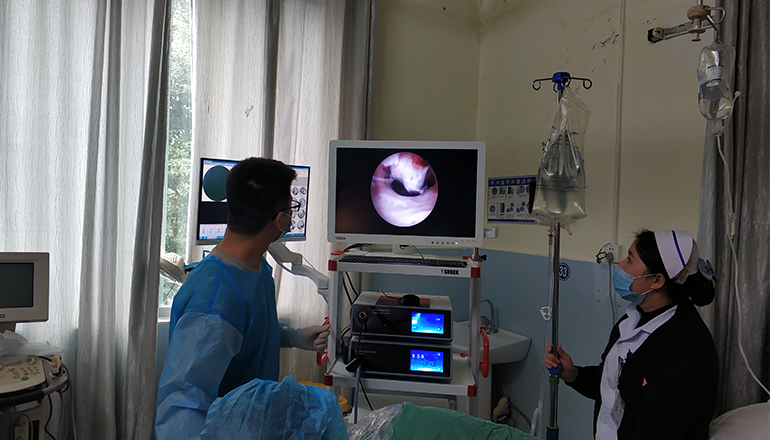- Shanghai, China
- [email protected]
- +86-21-58189111
Hysteroscopy is a minimally invasive surgical procedure that involves the use of specialized instruments to examine the inside of the uterus and treat various uterine conditions. There are several hysteroscopy surgical instruments commonly used in this procedure. Here is an introduction to some of the commonly used hysteroscopy surgical instruments:
Hysteroscope: A hysteroscope is a thin, lighted instrument that is inserted through the vagina and cervix to visualize the inside of the uterus. The hysteroscope can have a rigid or flexible shaft and may be equipped with a camera, light source, and channels for introducing fluid or surgical instruments.
Sheath: A hysteroscope sheath is a protective sleeve that covers the hysteroscope and is inserted into the cervix. The sheath helps to protect the cervix and provides a conduit for introducing other surgical instruments into the uterus.
Fluid management system: A fluid management system is used to deliver a distending medium into the uterus, which allows for better visualization during the hysteroscopy procedure. The system typically includes a fluid bag, tubing, and a pump.
Grasping forceps: Grasping forceps are surgical instruments that are used to grasp and remove tissue or foreign bodies from the uterus. The forceps may have a straight or curved tip and may be designed for single or multiple use.
Scissors: Scissors are used to cut and remove tissue from the uterus during hysteroscopy. The scissors may have a straight or curved tip and may be designed for single or multiple use.

Biopsy forceps: Biopsy forceps are used to obtain a sample of tissue from the uterine lining for analysis. The forceps may have a straight or angled tip and may be designed for single or multiple use.
Resectoscope: A resectoscope is a hysteroscopy instrument that is used to remove or ablate tissue from the uterus. The resectoscope includes an electrode that delivers energy to the tissue to remove it.
Myoma screw: A myoma screw is a hysteroscopy instrument that is used to manipulate and stabilize uterine fibroids during surgery. The screw is inserted into the fibroid and then rotated to stabilize it during removal.
Cervical dilator: A cervical dilator is a surgical instrument that is used to dilate the cervix and allow for easier insertion of other hysteroscopy instruments.
Uterine manipulator: A uterine manipulator is a surgical instrument that is used to manipulate the position of the uterus during hysteroscopy surgery. The manipulator may be designed to be inserted through the cervix or via a separate abdominal incision.
In conclusion, hysteroscopy surgery relies on a variety of specialized instruments to visualize and treat uterine conditions. These instruments are designed to be minimally invasive and effective in treating a variety of uterine conditions. If you are considering hysteroscopy surgery, your doctor will discuss the specific instruments that will be used in your procedure.
It is important to note that these instruments are specialized and require skill and experience to use safely and effectively. It is essential that hysteroscopy surgery is performed by a qualified and experienced gynecologist who has the necessary training to use these instruments properly.
Advancements in technology have also led to the development of newer hysteroscopy instruments, such as miniature cameras and laser probes, which allow for even more precise and targeted treatment of uterine conditions. Your doctor may choose to use these newer instruments depending on the specific condition being treated.
In summary, hysteroscopy surgery is a minimally invasive procedure that utilizes a variety of specialized instruments to diagnose and treat uterine conditions. These instruments are designed to be effective and safe when used by a qualified and experienced gynecologist. If you are experiencing symptoms related to your menstrual cycle or fertility, talk to your doctor about whether hysteroscopy may be appropriate for you.
Leave a Comments